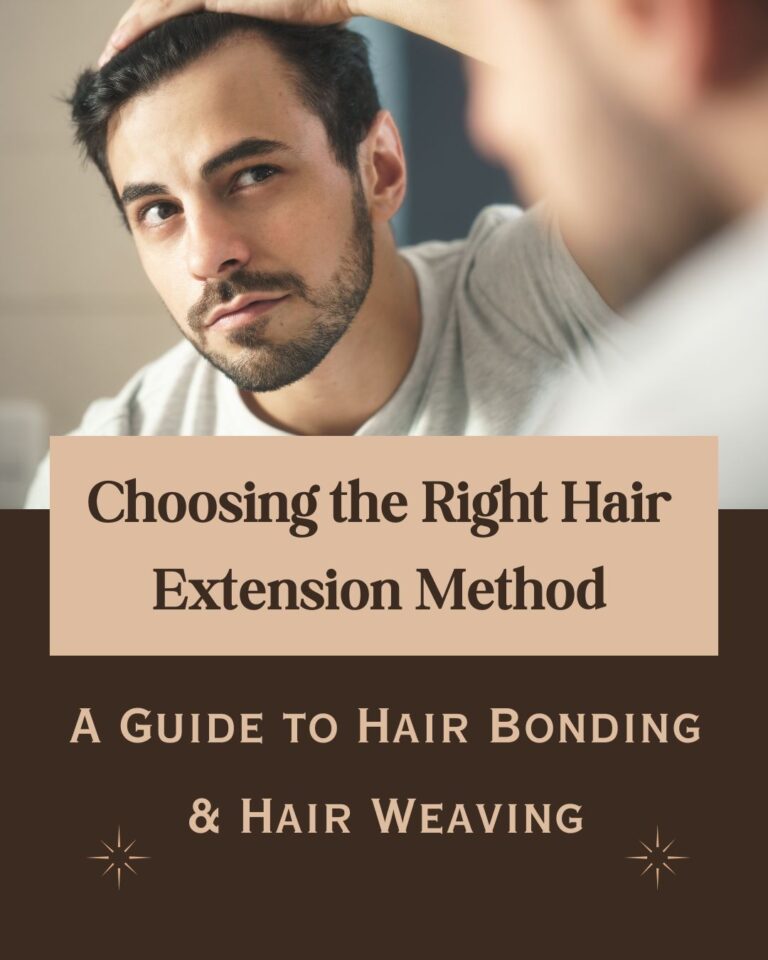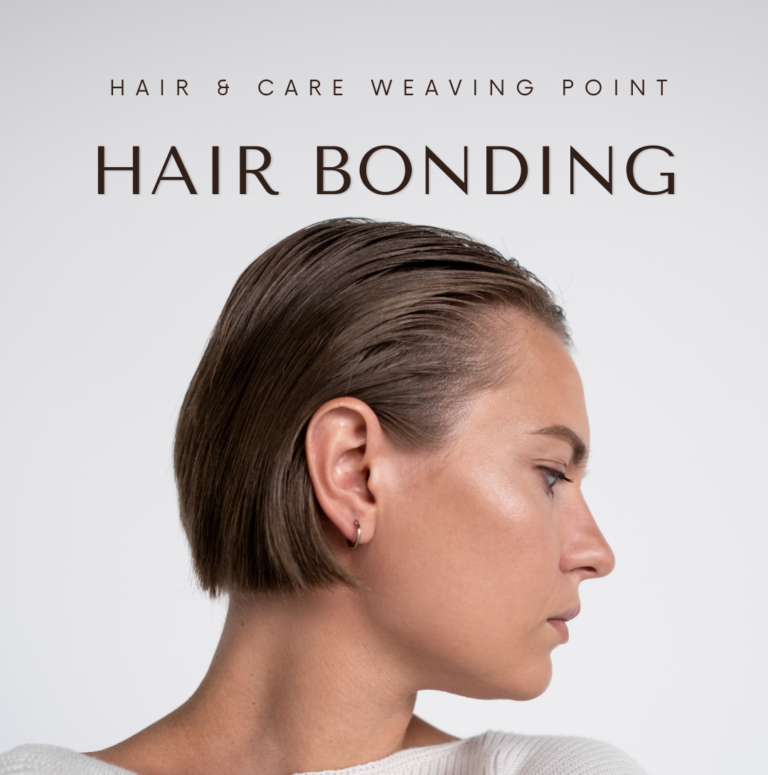Welcome to Hair and Care Weaving Point | Free Shipping And COD On All Orders
The Science of Hair Bonding: Exploring Technology and Research Behind Hair Extensions
Hair bonding is a hair extension technique that has become increasingly popular among people who want to add length, volume, or thickness to their hair. The process involves attaching artificial hair to natural hair using various bonding materials and techniques.
Hair bonding has been around for centuries, but advancements in technology and research have made it safer and more natural-looking than ever before.
The Science Behind Hair Bonding
To understand the science behind hair bonding, it’s important first to understand the properties of hair and the materials used to bond it. Human hair is made up of a protein called keratin, a fibrous structural protein that provides strength and elasticity to hair.
Keratin is also the main component of nails and the outer layer of skin. In hair bonding, the key is to find a bonding material that is strong enough to hold the artificial hair in place but does not damage the natural hair.
Different bonding materials are used in hair bonding, including adhesives, microbeads, and clips. Each material has its properties and advantages, depending on the individual’s hair type, lifestyle, and desired look.
Adhesives
Adhesives are the most commonly used bonding material in hair bonding. They come in different forms, such as tape, glue, or keratin, and are designed to be strong enough to hold the hair in place but not cause any damage to the natural hair. Adhesives are suitable for all hair types and can last several weeks or months, depending on the adhesive used and how well it’s maintained.
Some advantages of using adhesives include the following:
- They are versatile & can be used to attach hair extensions to any part of the head.
- They are safe to use on natural hair when applied correctly.
- They are comfy to wear & do not cause any discomfort or itching.
However, some disadvantages of using adhesives include:
- They can cause allergic reactions in some people.
- They require professional application and removal to avoid damage to natural hair.
- They can be difficult to remove and may leave residue on natural hair.
Microbeads
Microbeads, or micro rings, are small metal or plastic rings that attach artificial hair to natural hair. The rings are clamped onto small sections of natural hair, and the artificial hair is then threaded through the ring and clamped shut. Microbeads are popular for those who do not want to use adhesives or clips and are looking for a more natural-looking hair extension.
Some advantages of using microbeads include the following:
- They do not require any adhesives or chemicals, making them safe for natural hair.
- They can stay for several months with good maintenance.
- They can be easily removed and reattached if necessary.
However, some disadvantages of using microbeads include the following:
- They can cause discomfort or irritation if not applied properly.
- They can be visible if not covered by natural hair.
- They require professional application and removal to avoid damage to natural hair.
Clips
Clips are another popular choice for hair bonding. Small clips are attached to the artificial hair and clipped onto the natural hair. Clips are easy to use and can be removed easily, making them a great choice for those who want to change their hairstyle frequently.
Some advantages of using clips include the following:
- They do not require any adhesives or chemicals, making them safe for natural hair.
- They are easy to apply and remove, making them suitable for quick hairstyles.
However, some disadvantages of using clips include:
- They may be visible if not covered by natural hair.
- They may not be suitable for those with thin or fine hair, as the clips may slip or not hold securely.
- They may induce discomfort or outrage if worn for extended periods.
Hair Bonding Technology
Advancements in hair bonding technology have made it safer and more natural-looking than ever before. Some of the latest technologies include:
Heat Bonding
Heat bonding involves using a special tool that heats and melts the bonding material, creating a strong bond between artificial and natural hair. Heat bonding is a quick and efficient way to attach hair extensions, and the bond can last several months with proper maintenance. However, using the correct temperature and technique is important to avoid damage to natural hair.
Ultrasonic Bonding
Ultrasonic bonding uses high-frequency sound waves to soften the bonding material, allowing it to bond with the natural hair without using heat or chemicals. Ultrasonic bonding is a safe and gentle method used on all hair types. It is also a quick and efficient method that can last several months with proper maintenance.
Cold Fusion Bonding
Using ultrasound waves, cold fusion bonding uses a keratin-based bonding material attached to the natural hair. Cold fusion bonding is a safe and gentle method used on all hair types, including fine or thin hair. The bond created by cold fusion bonding can last for several months with proper maintenance.
Research
Research on hair bonding is ongoing, with scientists and hair care experts continually looking for ways to improve the safety, effectiveness, and natural-looking results.
New Bonding Materials
Research is being done to find new, innovative bonding materials that are stronger, safer, and more natural-looking than current materials. Some new materials being tested include natural plant-based adhesives, biodegradable polymers, and nano-fibre technology.
Hair Extension Safety
Researchers are studying the safety of hair extensions, including the effects of bonding materials on natural hair, the risks of allergic reactions, and the long-term effects of wearing hair extensions. This research will help to ensure that hair bonding remains a safe and effective option for those who want to enhance their natural hair.
Hair Extension Maintenance
Research is also being done to find ways to improve the maintenance and longevity of hair extensions. This includes developing new products and techniques for cleaning, conditioning, and styling hair extensions and studying the effects of environmental factors such as sun exposure and humidity on hair extensions.
Conclusion
Hair bonding is a popular hair extension technique that can add length, volume, and thickness to natural hair. Advances in hair bonding technology and research have made it a safer and more natural-looking option than ever before.
In addition to choosing a reputable professional, consider using high-quality hair extensions from a trusted company like Hair and Care Weaving Point Company. Hair and Care Weaving Point Company is a leading provider of premium hair extensions and hair care products committed to quality and customer satisfaction. Their extensions are made from 100% human hair and are available in various styles, colours, and lengths to suit your needs and preferences.
Whether you choose to use hair bonding or another hair extension technique, it is important to prioritize the health and safety of your natural hair. With the right care and maintenance, hair extensions can be a great way to enhance your natural beauty and achieve the hair you’ve always wanted. Trusting a company like Hair and Care Weaving Point Company for your hair extension needs can give you peace of mind and confidence in your hair care routine.



